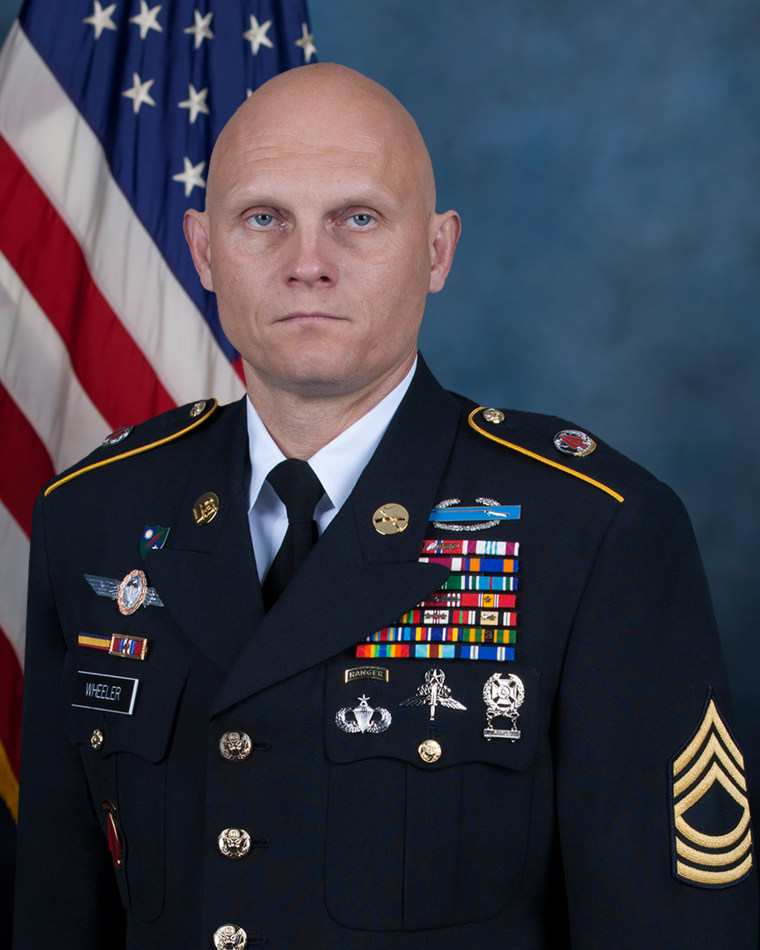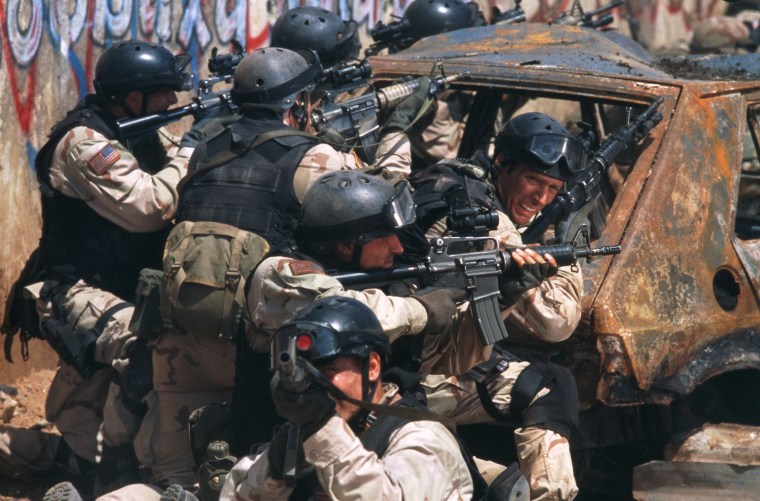In his campaign against ISIS, President Obama has relied on airstrikes and the training of local fighters as a way to avoid keeping U.S. troops outside the line of fire. But he also needs military teams that can hit the ground in an emergency.
In that gray area stands Delta Force.
Delta Force is the Army's top covert combat unit, with a long history of hunting terrorists and rescuing hostages in war zones around the world. When Kurdish fighters in Iraq heard that ISIS was preparing to execute dozens of captives this week, America sent Delta Force commandos to help.
The raid was a success, resulting in the rescue of 70 hostages. But Delta Force also lost one of its own, 39-year old Master Sergeant Joshua Wheeler, a married father of four.

Delta Force isn't mentioned in the Pentagon's depictions of the raid, or of Wheeler's career. Officially, the U.S. military doesn't even acknowledge Delta Force or the other covert counterterrorism units under its Joint Special Operations Command, which have conducted some of the most successful operations of the wars in Afghanistan and Iraq and have become President Obama's favored on-the-ground weapon against ISIS in Syria and Iraq.
But the missions are often chronicled in the media, and have been the subject of numerous books and movies, most notably the Navy's SEAL Team Six's killing of Osama bin Laden, chronicled in the film "Zero Dark Thirty."
Delta Force, by comparison, keeps a lower public profile, often embedding themselves within other military units. Its commandos were involved in the rescue of State Department personnel during the Sept. 11, 2012 attack on the American embassy in Benghazi, Libya. They captured Abu Ahmed Khattala, one of the terrorists suspected in carrying out that attack, in June 2014.
A month after that operation, Delta Force commandos led an attempt to rescue a number of U.S. hostages in Syria, including American aid worker Kayla Mueller and journalist James Foley. The mission failed, and Mueller and Foley later died.
Last May Delta Force commandos killed ISIS leader Abu Sayyaf during a raid in Syria, capturing his wife and freeing a young woman whom U.S. officials said had been enslaved in the militant's compound.

For all its renown, Delta Force's introduction to the American public was ignominious.
Created in 1977 by a veteran of the Army's Special Forces in Vietnam, Delta Force's first mission was Operation Eagle Claw, the failed 1980 attempt to rescue U.S. hostages in Iran. That debacle, in which eight Americans were killed, prompted the Pentagon to tighten up oversight of Delta Force and other elite counterterrorism units and place them under the command of JSOC.
The United States used Delta Force in the 1980s invasions of Granada and Panama, and the search for Panamanian dictator Manuel Noriega. In the 1990s, Delta Force deployed to Somalia to hunt warlord Mohammed Farah Aideed, a mission that led to a failed assault on a pair of Aideed lieutenants in which 18 American servicemen died, including five Delta Force operators. That mission was portrayed in the book and movie "Black Hawk Down."

After the September 11, 2001 attacks, Delta Force was used to hunt leaders of Al Qaeda and the Taliban in Afghanistan, and helped American ground troops track down Saddam Hussein in 2003.
With the targeting of terror networks came an increased cooperation with like-minded fighters in foreign countries, a strategy that had been a specialty of the Army Special Forces, or Green Berets, said Linda Robinson, an international policy analyst at RAND.
In the chaos of the twin wars came the rise of ISIS. Rather than recommit ground troops to this new fight, America has paired airstrikes with "train and assist" partnerships with local security forces. Much of that work is being performed JSOC units, including a Delta Force-led team in Iraqi Kurdistan that targets top ISIS leaders, according to an account in Foreign Policy.
Until now, those missions have focused on Syria. But the effort now seems to be expanding to Iraq.
"This is one thing some are arguing — the need to be out and do more," Robinson said. "You risk more casualties, of course, but you can also gain more information and intelligence."
This week's hostage rescue — the first known instance of American service members battling ISIS fighters on the ground in Iraq under President Obama's new anti-ISIS campaign — could indicate a growing role for Delta Force.
Secretary of Defense Ash Carter said Friday that the military expects to conduct "more raids of this kind."
